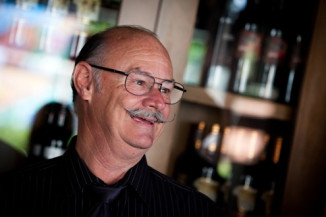C4 Deli Resident Bartender, Wine Purchaser and Texas native James Wall is the person you want on your best buddy list. Look out for his ‘red and white’ insight every Wednesday on ourWino Wednesday: Ask A Wino Q&A.
Q: What is the point of blind tasting and how do you get good at it?
A: The art of blind tasting is indeed a mystical and fantastical one. We all have that beloved (at times hated) friend that can pick up any glass of wine, wave a hand mysteriously around, sniff, sip and identify exactly what year, variety and region the particular wine is from. You wouldn’t be surprised if they could tell you the life stories of all the individual grapes inside it as well.
any glass of wine, wave a hand mysteriously around, sniff, sip and identify exactly what year, variety and region the particular wine is from. You wouldn’t be surprised if they could tell you the life stories of all the individual grapes inside it as well.
One of the benefits to blind tasting is that it takes away any bias you may have developed over the years. Say for instance you have an idea that you hate all merlots- if you were to be given a sip of one you may automatically hate it without giving it any thought. Blind tasting takes this problem away. In addition, it allows the taster to truly focus on each individual aspect about the wine in order to pinpoint what flavors can be detected.
There are two different types of blind tasting. Double-blind means that absolutely no information has been shared and single-blind means a few details have been shared, such as country of origin or type of grape. To get really good at blind tasting (especially double-blind) requires years of practice and lots of knowledge that I do not have the time or patience to share with you. Instead, I will leave you with the five main elements you must become a master of. After you have fully mastered each area completely, get back to me and we will have a Blind-Taste Off.
- The color of the wine.
- The Viscosity- shown by how the wine clings to the glass.
- The pigment- how deep is the color?
- The smell.
- The taste.
See you in a few hundred years.











